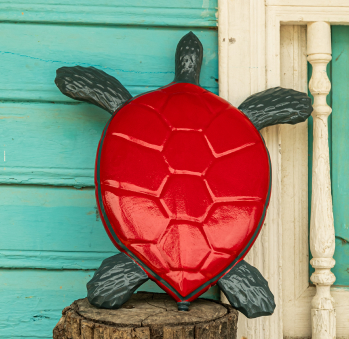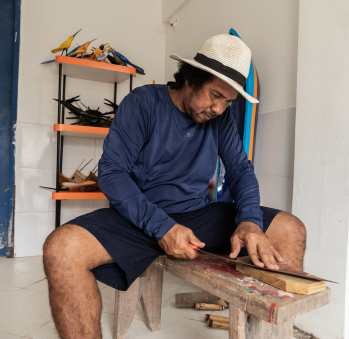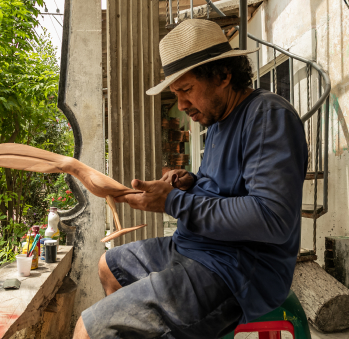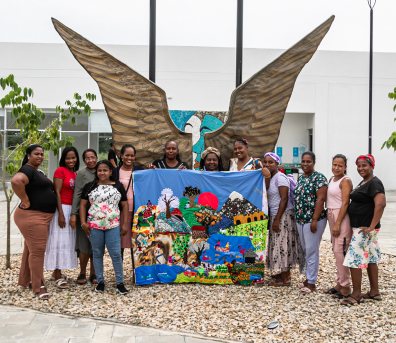Federman Vargas Peralta
Workshop: Artesanías y diseño Peralta
Craft: Woodwork
Trail: Bolívar Route
Location: Baru, Bolívar
SCHEDULE YOUR VISIT
Calle Real # 11 - 43, Baru, Cartagena, Bolívar
3186924396
vfede55@yahoo.com
The life and work of this artisan are inevitably tied to the sea. It starts with his grandfather, who brought the Peralta surname to the island of Barú, a surname that only his mother and aunt inherit. His grandfather was a sailor. In honor of his aquatic roots, like those of the mangroves, Federman named his workshop Peralta. Then there’s the fact that his island is home to a fishing community, surrounded by water, where people became carpenters in order to build their own canoes and vernacular houses, with their distinctive latticework for ventilation, using the driftwood that washed up on their shores. In this environment, swimming, traveling by canoe and boat, Federman became familiar with the creatures of the sea—rays, fish, crabs, starfish—as well as those of the air that fly between the coasts, such as pelicans, seagulls, and frigatebirds.
Like the self-taught carpenters of his land, Federman found his craft on his own. He had started out as an apprentice in a workshop, where he became skilled at making molds in plaster and silicone for ceramic pieces. To create the figures he would later replicate with these molds, he learned to carve in wood. He realized that he didn’t need to look for the originals elsewhere, he could make them with his own hands. Little by little, carving began to captivate him, and his wooden sculptures became more valuable to him than the clay replicas. He also realized that working with wood would be easier—it didn’t require a kiln, special paints, or long waiting times, as the ceramic process is especially slow.
So, he stuck with wood. He began by traveling to the Rosario Islands and Cholón to sell what he made. Later, when the white beaches and clear waters of Barú became a popular tourist destination, he contacted hotels to showcase his work and that of his fellow artisans from the first artisan association he joined. Through this association, he also attended workshops and fairs.
He had learned to carve before electricity arrived on the island, making everything by hand with chisels and knives. As a result, he learned to respect the shapes and sizes that the pieces of driftwood from the beach naturally had. He learned to read the wood, to imagine how to carve a fish—whether it was a muriel, isabelita, queen, or bishop—based on what the material suggested. Or a tray, when the situation called for it. Over time, surrounded by octopuses, lobsters, sea urchins, turtles, kingfishers, and the variety of herons that visit Barú, he realized he could expand the rich diversity of animals around him even further. He began painting them in colors, offering people options to match the palette of their homes. The boats didn’t fall behind, either. These handicrafts, which celebrate the traditions of his land, with their characteristic black, blue, and green colors, are now painted with the flags of the various countries whose people come to visit Barú.
Craft


















Artisans along the way
Artisans along the way
No puede copiar contenido de esta página










































































